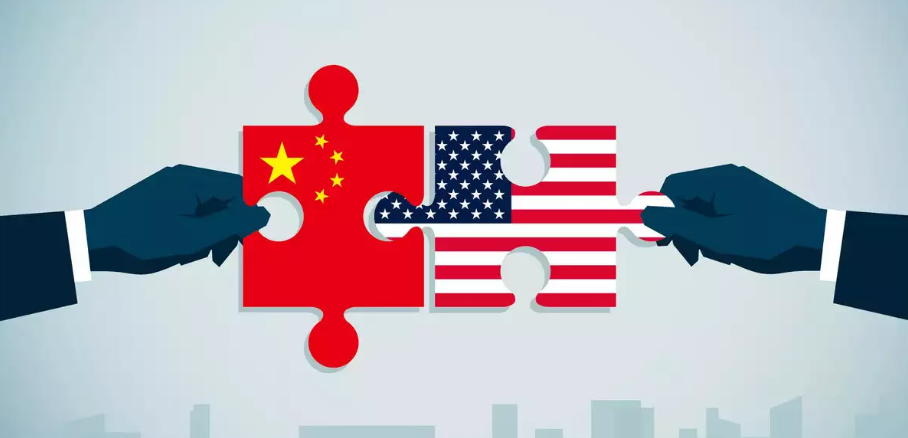Reshoring, Friend-Shoring & Global Supply Chains: Economic Strategies Redefining Trade
Introduction
The fast-moving global economy fundamentally depends on supply chain strategies to form policies which guide trade and manufacturing actions and preserve economic stability. Supply chain strategies including reshoring, friend-shoring and near-shoring and on-shoring grow in importance because organizations and countries aim to minimize supply chain risks as well as maintain stable operations. Supplier strategies have gained essential value since global disruptions like COVID-19 pandemic and Russia-Ukraine war and US-China trade war occurred.
Scheme comprehension needs special attention among UPSC aspirants and policymakers and business professionals because these economic strategies impact international trade connections alongside economic policies and domestic protection matters.
Understanding LPG Reforms and Globalization
Prior to examining reshoring and friend-shoring a proper comprehension of LPG reforms (Liberalization, Privatization, and Globalization) alongside their consequences on worldwide commerce becomes essential.
What is Globalization?
Globalization means the growing economic fusion of nations enables free movement between nations for products and services as well as capital and workforce. Production has become international due to companies establishing manufacturing operations throughout various world countries to lower expenses and boost operational performance.
Key Organizations Influencing Globalization:
- Global trade promotion through economic integration policies comes from OECD (Organization for Economic Co-operation and Development).
- WTO (World Trade Organization) explains globalization through its definition of free movement without restrictions of goods and services and capital and labor between national borders.
Key Policies Under Globalization:
- Increase in equity limit for foreign investments
- Currency convertibility
- Long-term trade policies
- Reduction in tariff barriers
- Elimination of non-tariff barriers
Economic growth through globalization has highlighted supply chain weaknesses which made organizations rethink their production locations.
What is Reshoring?
The term reshoring describes bringing production and manufacturing operations home to a company’s native country. It also goes by the names onshoring, inshoring and backshoring.
Example of Reshoring:
Production facilities of many American companies relocated to the United States because of the US-China trade war to cut their dependency on Chinese operations.
Why Do Companies Opt for Reshoring?
- Labor expenditures together with shipping expenses throughout Asia and other developing economies have been increasing to a point where offshore manufacturing has lost its financial efficiency.
- Stubborn supply chain management practices based in one country streamline logistics procedures and deliver fast transit times at low risk levels.
- Operations based in the U.S. after reshoring protect businesses from geopolitical uncertainties including trade disputes and health crises alongside political instabilities.
Challenges of Reshoring:
- High Costs: The relocation of whole production facilities to domestic locations demands heavy financial commitment.
- Raw Material Availability: Most industries need foreign supplier access to raw materials which makes complete reshoring difficult.
What are Black Swan Events?
A Black Swan Event is a rare, unpredictable event with severe economic consequences. These events often cause major disruptions to global trade and supply chains.
Examples of Black Swan Events:
- COVID-19 Pandemic: Led to massive supply chain disruptions worldwide.
- 2008 Financial Crisis: Caused a global economic downturn.
- Russia-Ukraine War: Impacted global energy and food supply chains.
Even with advanced prediction tools, Black Swan Events are difficult to foresee, which is why businesses are shifting to more resilient supply chain strategies like near-shoring and friend-shoring.
What is Near-Shoring?
Near-shoring involves relocating production to a geographically closer country instead of bringing it back to the home country.
Example of Near-Shoring:
A US-based company moving its manufacturing from China to Mexico instead of bringing it back to the US.
Advantages of Near-Shoring:
- Lower Transportation Costs
- Faster Delivery Times
- Better Supply Chain Control
However, near-shoring still relies on foreign labor and materials, which can lead to continued geopolitical risks.
What is Friend-Shoring?
Friend-shoring, also known as ally-shoring, is a strategy where companies relocate supply chains to politically stable and allied nations to minimize risks associated with hostile countries.
Example of Friend-Shoring:
- The US encouraging firms to shift manufacturing from China to India or Vietnam, which are politically aligned with Western nations.
Why is Friend-Shoring Gaining Popularity?
- US-China Trade War: The US is reducing dependency on Chinese manufacturing.
- Ukraine War & Western Sanctions: Western countries are reducing trade relations with Russia.
- Supply Chain Resilience: Countries want stable and predictable trade partners.
Economic Concerns of Friend-Shoring:
According to a World Trade Organization (WTO) report, if the world splits into Eastern and Western trading blocs, global GDP could decline by 5%, disproportionately affecting emerging economies.
Many economists argue that friend-shoring may increase protectionism, reducing overall global trade efficiency.
What is On-Shoring?
On-shoring refers to domestic outsourcing, where businesses relocate operations to non-metropolitan cities within their own country for cost savings.
Example of On-Shoring:
- A software company in the US moving its operations from New York to Texas to reduce costs.
Challenges of On-Shoring:
- Higher labor costs than offshore locations.
- Limited access to global talent, especially in industries like technology and engineering.
With the rise of remote work, on-shoring has become less attractive, especially in software and IT industries.
What is Flipping & Reverse Flipping?
Flipping:
Flipping refers to the relocation of an Indian startup’s ownership and intellectual property to an overseas entity.
Why Do Startups Flip?
- Tax Benefits in countries like Singapore and the US.
- Easier Access to Foreign Investments.
- Simpler Legal & Regulatory Frameworks.
Reverse Flipping:
Reverse flipping is the trend of overseas startups shifting their base back to India due to India’s favorable economic policies.
Why Are Startups Returning to India?
- Government incentives (tax breaks, funding assistance).
- Expanding domestic market with rising consumer demand.
- Growing investor confidence in India’s startup ecosystem.
- IPO opportunities in India for high-growth startups.
Conclusion
Economic strategies like reshoring, near-shoring, and friend-shoring are reshaping global trade policies. While reshoring ensures better control over supply chains, it comes at a high cost. Friend-shoring prioritizes trade security, but may reduce global economic efficiency. Similarly, flipping and reverse flipping highlight how businesses adapt to changing economic and regulatory landscapes.
As global trade continues to evolve, countries and businesses must balance cost efficiency, security, and sustainability in their supply chain decisions. Understanding these strategies is crucial for policymakers, investors, and students preparing for competitive exams like UPSC.
Would you like to know how these strategies impact India’s economy and trade policies? Stay tuned for more in-depth analysis!



